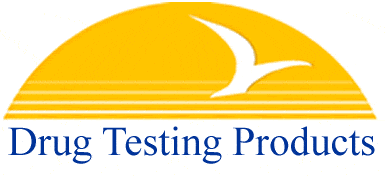
|
Home
|
View Cart |
Shipping | Privacy |
Drug Testing Help |
|
|
|
|
||||
 |
|
|
drug test * drug testing * employee drug testing * urine test * marijuana drug test * urine drug test * hair drug test * drug test * drug test kit * saliva drug test * panel drug testing | ||
|
|
|
||||||
Drug Testing and Reduction of AccidentsOne of the most frequently voiced assertions from those who favor drug testing is that it will reduce the number of deaths, accidents, and injuries caused by workers who have been using drugs. Proponent_ of testing often cite the Amtrak-Conrail accident described in Chapter 1 as an example of the way in which drug use can result in a horrible accident. There are many other examples of drug-related accidents. In April 1987, a bus driver drove his bus into a bridge on the George Washington Parkway in Virginia. One passenger was killed and thirty two others were injured. The driver later tested positive for cocaine, valium, and marijuana. In January 1988, the crash of a commuter airplane in rural Colorado was attributed to cocaine use by the pilot. Nine people died in the accident. In January 1987, a switch operator's negligence caused the derailment of an Amtrak train, resulting in the injury of twenty-five passengers. The operator later tested positive for marijuana and one other illegal drug. Other studies cited by testing proponents seem to show how common drug-related accidents have been in the past. Research by the Federal Railroad Administration in 1987, for example, found that out of 759 railway employees who were tested following 175 different accidents, 29 tested positive for one or more illegal drugs, including cocaine, methamphetamine, and marijuana. Supporters of drug testing say that examples like these reinforce a common-sense view of the drug abuse problem: People who use drugs are more likely to cause accidents than those who do not. How effective is drug testing in reducing accidents in the workplace? According to some experts, testing may be a very effective deterrent! One of the most widely quoted studies on testing and safety in the workplace is the one conducted by Peter Bensinger, former director of the U.S. Drug Enforcement Administration. Beninger was hired by Georgia Power (GP) to create a drug testing program at the construction site of a new GP nuclear power plant. Bensinger later described the results of his program: We note in our report that lost time accident rates have decreased from 5.41 accidents during 200,000 man hours in 1981 to less than 0.5 accidents in 1985. This remarkable achievement may not necessarily be attributed to the anti-drug program, but increased supervisory attention, drug-policy job-site awareness, extensive drug testing, and management commitment to the anti drug program have probably been significant contributing factors. In another study on the effectiveness of drug testing, the number of personal injuries among railway workers fell from 2,234 in 1983 to 322 in the first six months of 1989. This decline was attributed to a more vigorous program of drug testing instituted by the nation's railroads. Who Should Consider Drug testing in The Workplace Drug Testing and Corporate Morale Drug Testing and Increase in Productivity Drug Testing Government Policies
| |||||||